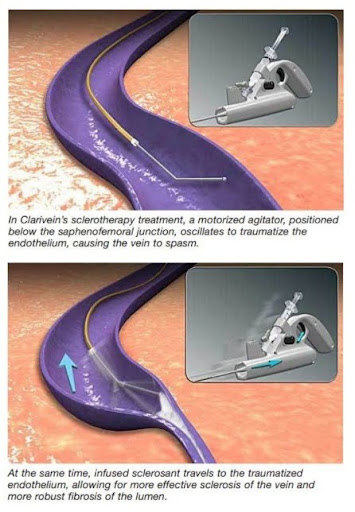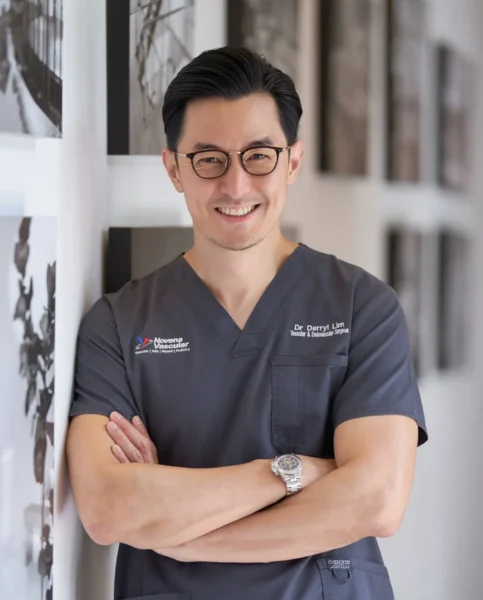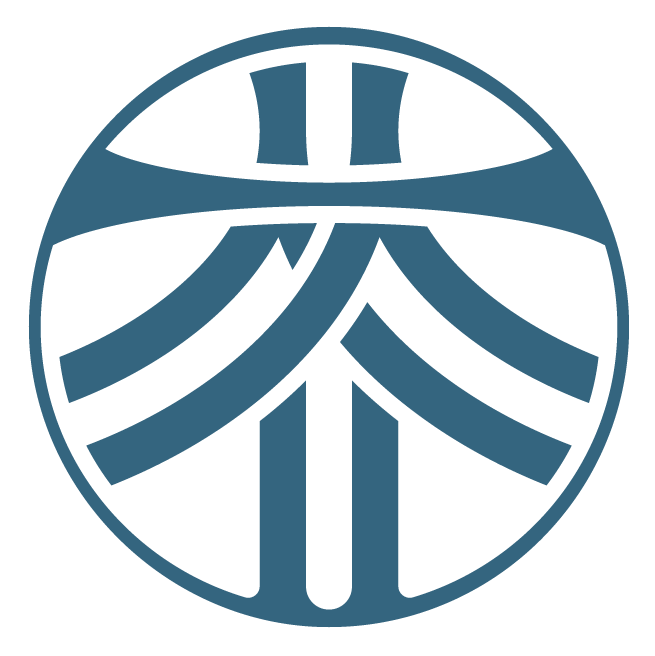ClariVein
What is ClariVein?

ClariVein is an innovative, minimally invasive vein treatment designed to relieve symptoms of venous reflux disease and varicose veins. Often described as a form of “mechanochemical ablation,” ClariVein does not rely on heat to seal unhealthy veins. Instead, it uses a special rotating catheter combined with a sclerosing agent, leading to fewer injections, potentially less pain, and a faster return to daily routines. This unique technology offers an alternative to more traditional methods, such as laser or radiofrequency ablation, that typically require tumescent anesthesia and can involve multiple needle sticks.
Why is ClariVein Needed?
Venous reflux disease occurs when the valves in leg veins malfunction, causing blood to flow backward instead of returning efficiently to the heart. Over time, this backward flow can lead to leg pain, swelling, and the development of varicose veins or spider veins.
ClariVein addresses the underlying problem by closing off the incompetent veins so that blood is naturally rerouted to healthier vessels. Because the technique avoids thermal energy—no lasers or radiofrequency—it significantly reduces the risk of heat-related injuries and often results in a more comfortable experience for patients.
How ClariVein Works
During a ClariVein procedure, a slender catheter is gently guided into the affected vein with the help of ultrasound imaging. At the tip of the catheter is a rotating wire designed to irritate the lining of the vein. This action preps the vein for the sclerosing solution, which is delivered through the same catheter. The solution causes the vein walls to close, and the body gradually reabsorbs the sealed segment in the weeks that follow. Because no heat is used, there is no need for the tumescent anesthesia often required to protect surrounding tissues during thermal ablation. That translates to fewer needle sticks and less discomfort from fluid infiltration into the leg.
What to Expect During the Procedure?
ClariVein is typically performed under local anesthesia with sedation to help you relax, but general or spinal anesthesia can be considered if you’re also having other procedures done at the same time—such as the surgical removal of more prominent varicose veins (often referred to as a “stab avulsion”). The entire process usually lasts between 30 and 45 minutes. Many patients describe feeling a mild buzzing or tingling sensation from the rotating catheter, but this is generally well tolerated and short-lived.
Recovery and Return to Daily Activities
One of ClariVein’s main advantages is its relatively quick recovery. Because it involves a minimal number of needle sticks and no thermal damage, patients often experience less bruising and swelling compared to other minimally invasive vein treatments. You may be discharged the same day or the following morning, depending on the setting in which your procedure takes place. Walking is encouraged soon after to support healthy circulation and reduce the risk of complications. Most people find they can resume regular routines within a few days, including returning to work and light exercise. To aid healing and reduce any residual swelling, wearing a compression stocking for one to two weeks is usually recommended.
Possible Risks and Side Effects
Like any medical procedure, ClariVein carries a small risk of complications. Some patients experience temporary tingling, a pulling sensation, or mild discomfort along the treated vein, but these symptoms typically improve on their own within a short time. Phlebitis, or inflammation of the vein, can sometimes occur, causing localized redness and tenderness. Skin discoloration may also develop but usually fades within days to weeks. Because the technique does not use heat, thermal injuries—such as burns or nerve damage—are far less likely compared to laser or radiofrequency ablation. Nevertheless, it’s essential to follow your doctor’s post-procedure guidelines closely to ensure a smooth recovery.
Is ClariVein Right for You?
If you are looking for a method to manage venous reflux disease, alleviate painful or unsightly varicose veins, and avoid the discomfort associated with tumescent anesthesia, ClariVein may be an excellent choice. Its combination of mechanical and chemical actions means less trauma to the surrounding tissues, which often translates to a more comfortable overall experience and a prompt return to normal life. By sealing off incompetent veins and redirecting blood to healthier pathways, ClariVein targets the heart of venous reflux disease while keeping patient comfort in mind.
If you’d like to explore ClariVein as a treatment option or learn more about whether it’s the right solution for your vein concerns, reach out to schedule a consultation and discuss your personalized care plan.
This information is provided as a general guideline and should not replace professional medical advice. Always consult with your healthcare provider for recommendations tailored to your specific situation.
FAQ's about ClariVein
ClariVein is a minimally invasive procedure for treating venous reflux disease, combining mechanical and chemical modalities, offering a less painful experience and quicker recovery.
ClariVein addresses venous reflux disease by sealing malfunctioning veins, using a combination of mechanical agitation and a sclerosing agent, rerouting blood to healthier veins.
ClariVein is known for being less painful compared to traditional treatments, with most patients experiencing only minor discomfort, like a buzzing or tingling sensation.
Most patients are encouraged to walk shortly after the procedure. They can usually return to regular activities within a few days.
Unlike traditional treatments, ClariVein does not use heat, eliminating risks of thermal injury and the need for tumescent anesthesia, reducing discomfort and recovery time.
ClariVein addresses the underlying cause of incompetent veins in superficial venous reflux disease, whose malfunction leads to the manifestations of venous reflux.
While this may potentially reduce the appearance of some varicose veins (swollen, bulging veins) or spider veins (“thread” veins), these are definitively addressed by other treatment modalities such as mini-stab avulsions and injection sclerotherapy
ClariVein is typically a safe and minimally invasive procedure, but, like all medical interventions, it does have some associated risks, including minor pain, bruising, and phlebitis.
It is often considered safer than other methods, such as lasers, because ClariVein does not generate heat. This eliminates the risks of thermal injuries, such as pain, skin damage, and nerve injury, inherent to those methods.
ClariVein is typically performed under local anesthesia with sedation, but General or Spinal Anesthesia can also be used depending on patient comfort and whether additional procedures are required.
Wearing a compression stocking is recommended for 1-2 weeks after the ClariVein procedure to reduce bruising and improve healing.
Temporary tingling, a pulling sensation, minor pain, phlebitis, or skin discoloration are potential side effects, which typically resolve on their own.
The ClariVein procedure usually takes approximately 30 to 45 minutes, depending on the number of veins treated.
Patients are encouraged to start walking shortly after the ClariVein procedure to promote blood flow and aid in the healing process.
Most patients can resume exercising after 2 weeks post-ClariVein procedure.
Coverage for ClariVein may vary, and it is recommended to consult with your insurance provider regarding the specifics of your policy.
Dr Lim specialises in the treatment of vein disorders such as varicose veins and spider veins. With extensive experience and a commitment to individualized care, Dr. Lim ensures that each patient’s needs and concerns are addressed.
Schedule a consultation with us to discuss whether ClariVein is the right treatment option for you.


